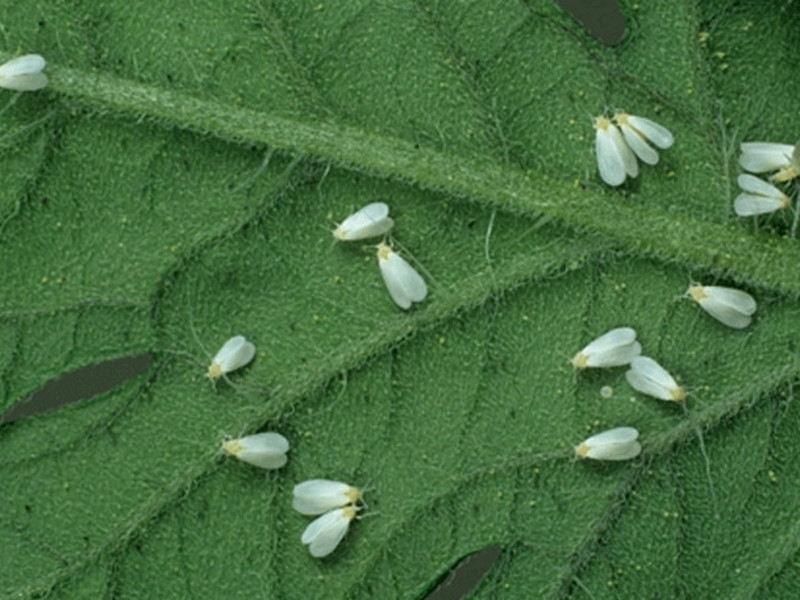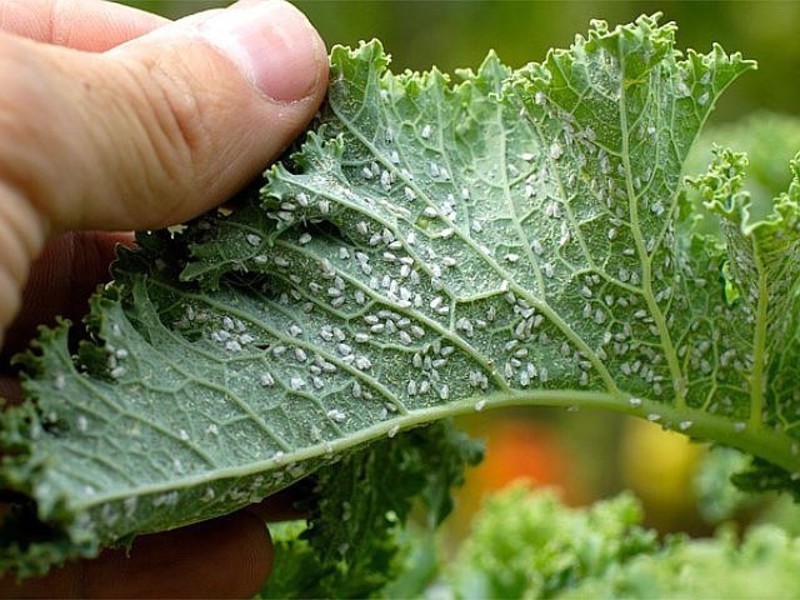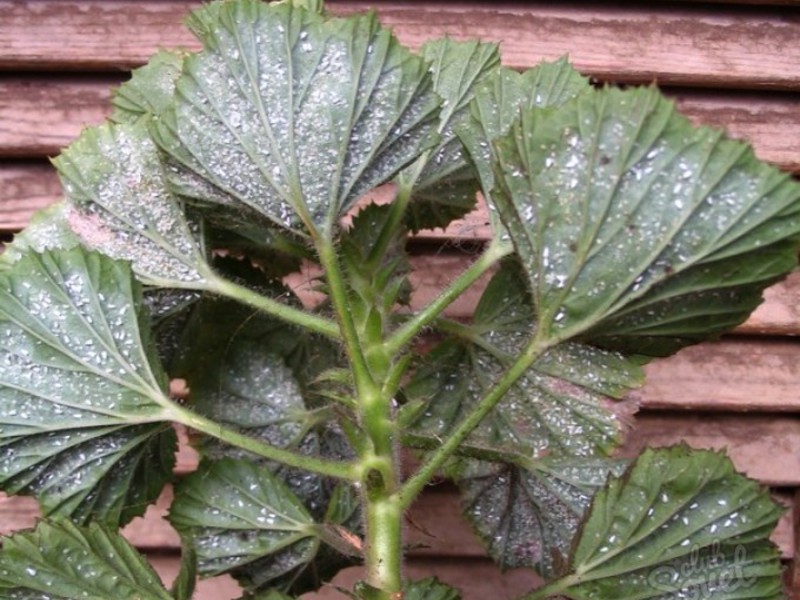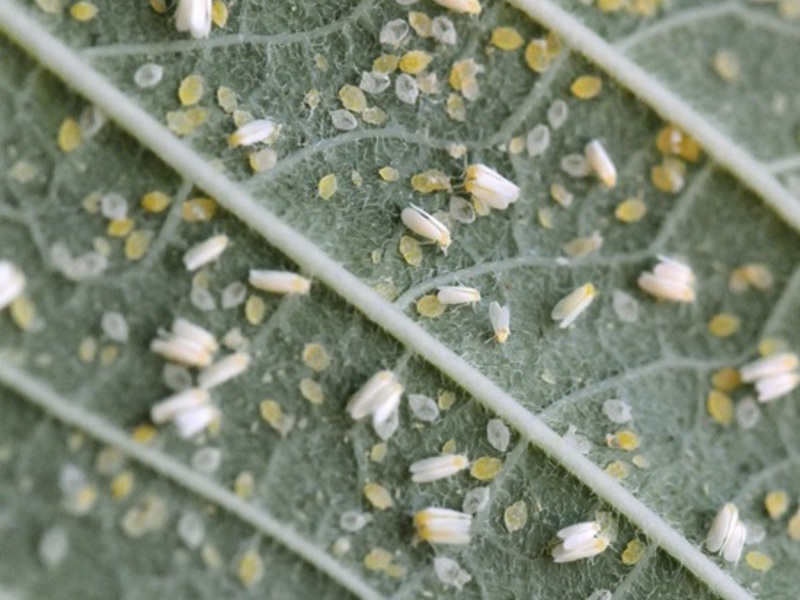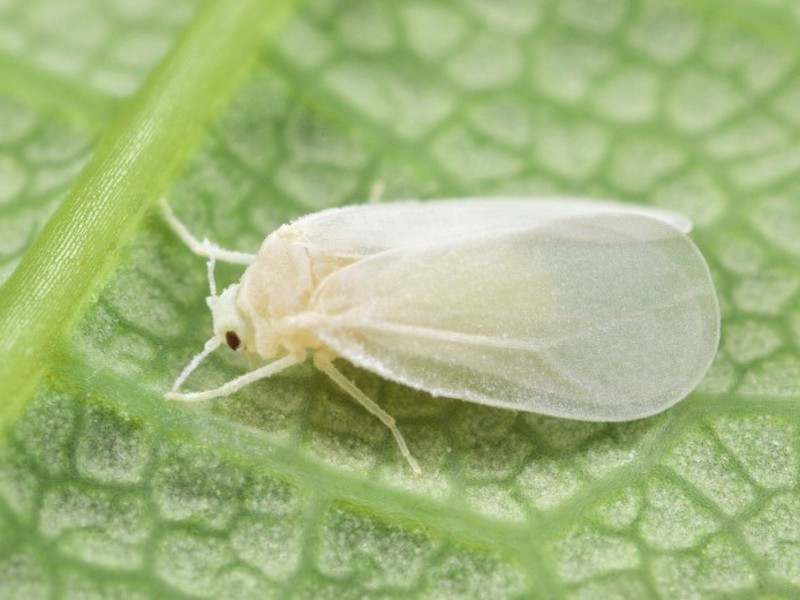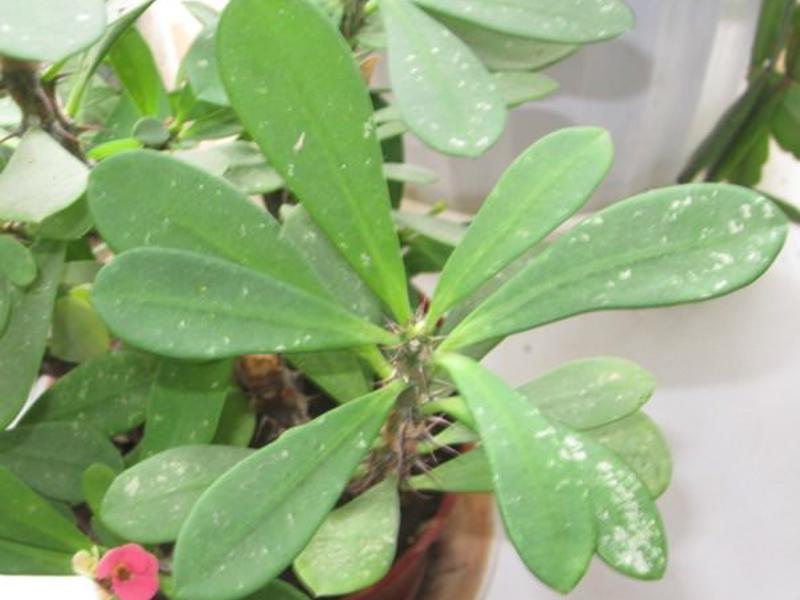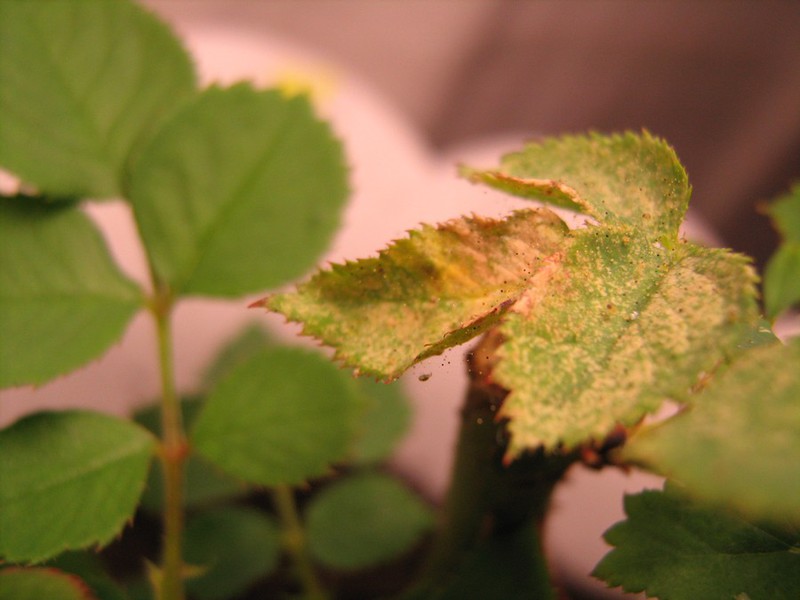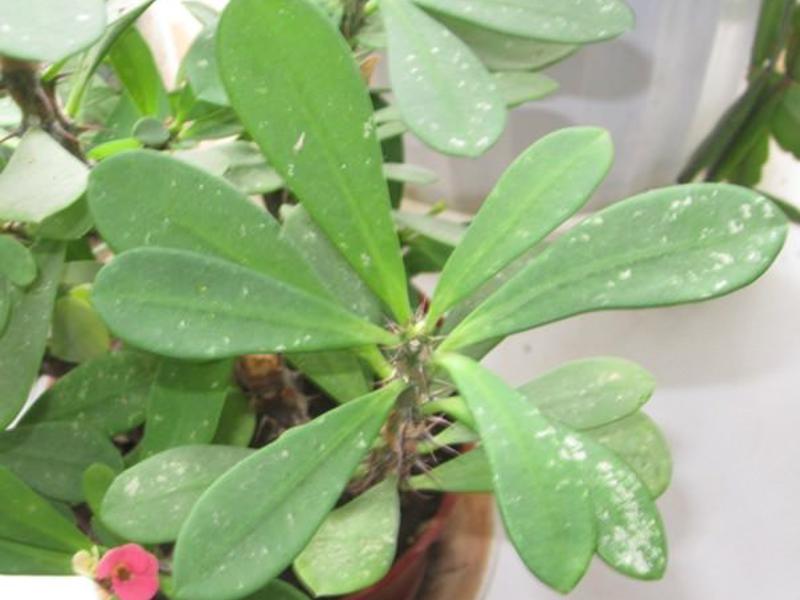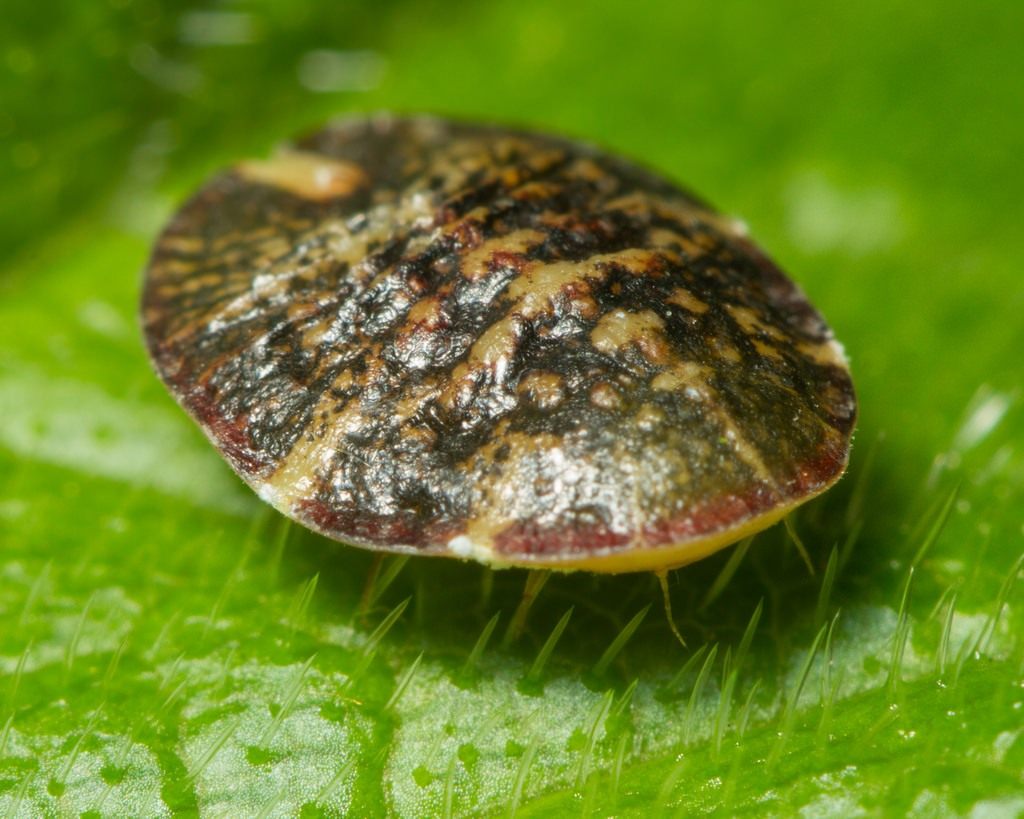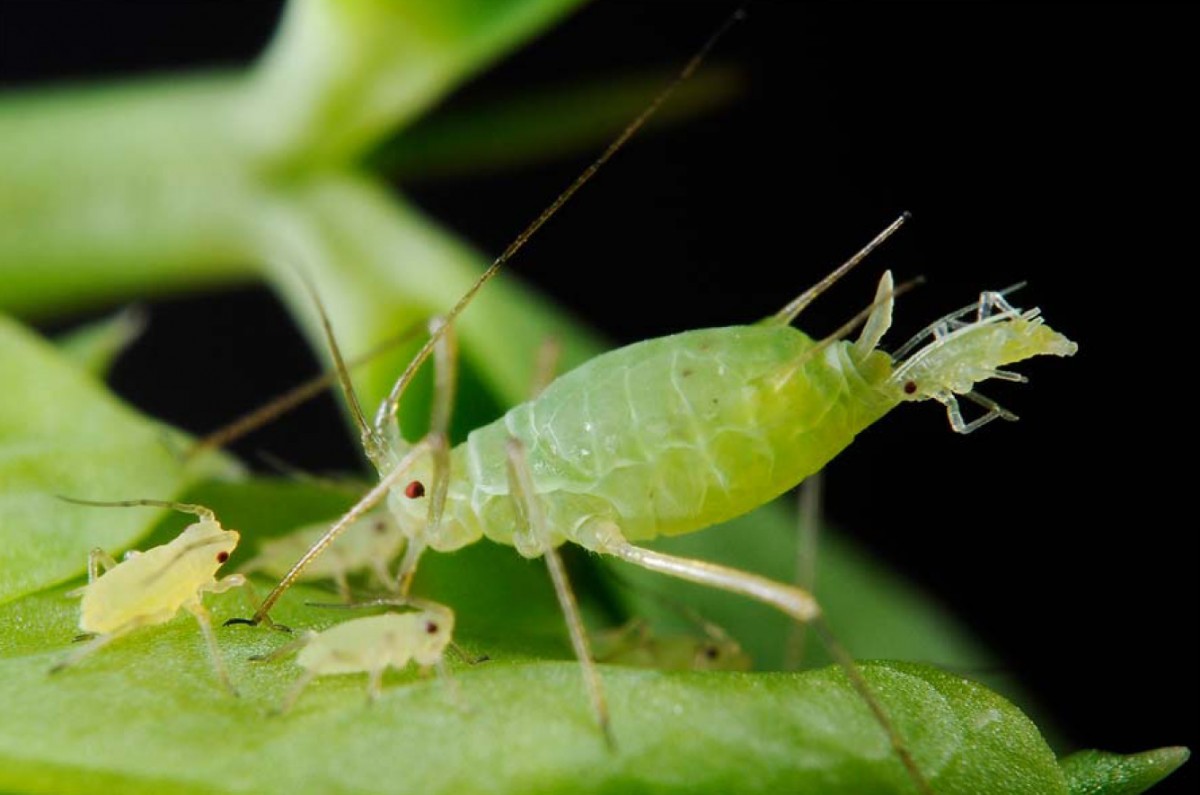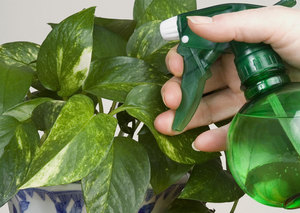 The variety of indoor flowers is striking in its wealth. Each person strives to keep his favorite indoor plants in the best conditions, to create an optimal microclimate for them, and to properly care for them. But often, each of them is faced with the problem of the presence of parasites on the leaves or in the ground. The most common pest is whitefly on houseplants. It is not just dangerous, it can destroy all indoor plants in a short period of time, so you need to quickly and correctly fight the whitefly.
The variety of indoor flowers is striking in its wealth. Each person strives to keep his favorite indoor plants in the best conditions, to create an optimal microclimate for them, and to properly care for them. But often, each of them is faced with the problem of the presence of parasites on the leaves or in the ground. The most common pest is whitefly on houseplants. It is not just dangerous, it can destroy all indoor plants in a short period of time, so you need to quickly and correctly fight the whitefly.
Content
What is a whitefly?
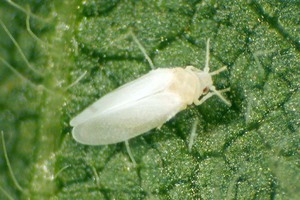 Whitefly is small insect, up to 4 mm, which in its appearance is very similar to a fly. The most dangerous for the plant are females. They lay their larvae on the inside of the flower. The larva has 4 stages of development, each of which is characterized by its own characteristics. It will not be possible to get rid of this insect with ordinary water, since all the larvae are firmly glued to the leaf of the plant.
Whitefly is small insect, up to 4 mm, which in its appearance is very similar to a fly. The most dangerous for the plant are females. They lay their larvae on the inside of the flower. The larva has 4 stages of development, each of which is characterized by its own characteristics. It will not be possible to get rid of this insect with ordinary water, since all the larvae are firmly glued to the leaf of the plant.
Full developmental cycle from larva to adult whitefly takes place in 2 weeks... Once the pest reaches adulthood, it becomes very dangerous for the plant. The whitefly's body is covered with a white coating, which completely protects it from any chemical preparation. At the same moment, the grown individual begins to lay new larvae and it is almost impossible to get rid of them. The best time to kill adults is to mate. At this moment, the body's defenses are reduced, and the insect well absorbs any kind of chemical preparations.
Causes of the appearance of whitefly on indoor plants
For breeding this insect the following conditions are needed:
- high humidity;
- air temperature not less than 20 degrees;
- stale air;
- a large accumulation of plants in a minimal area.
It is the lovers of greenhouses in their homes that most often face this problem. In order to avoid the appearance of a dangerous guest, you need ventilate the room regularly... Also, the soil for planting young plants deserves special attention. It is necessary to use only proven, treated types of soil intended for planting indoor plants.
Also, flower lovers should know that whitefly can infect many plants, but the most favorite for her are: home violets, common primroses, gerberas, hydrangeas, primroses, begonias, royal gloxinia.
These flowers need to be watched regularly, checked to avoid the appearance of a dangerous insect.
How does a plant pest become infected?
Reasons that may affect the appearance of whitefly in the house, there may be several:
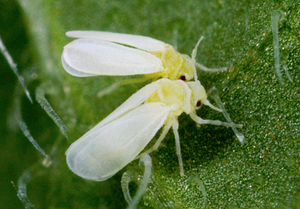 since adults fly, with an open window they can freely penetrate into the room and parasitize the plant;
since adults fly, with an open window they can freely penetrate into the room and parasitize the plant;- if one of the plants is infected, then the rest must be quickly isolated from it. Adults migrate to all indoor plants in a short period of time;
- very often the whitefly enters the room with a bouquet of garden flowers. Experts recommend not placing vases with bouquets near indoor plants.
How to quickly spot a whitefly on a plant
There are a number of signs that make it very easy to determine plant infestation at the initial stage. Among the most striking are the following:
- a tiny fly very often appears on a houseplant, which jumps or flies from leaf to leaf. You must immediately inspect such a plant;
- since the whitefly reproduces in 2 weeks, in a short period of time there will be a large accumulation of larvae or moths on the inside of the flower leaves;
- the affected leaves on the inside will have a sticky base - these are the waste products of the insect. Also, upon examination, colonies of larvae that are yellow in color will be found;
- when for a long time the owners do not pay attention to the appearance of a pest on their indoor plant, the leaves curl, specific spots appear and eventually they fall off;
- in the presented photos you can see vivid examples of whitefly larvae colonies.
What happens to a plant affected by a whitefly
An adult whitefly does not pose a direct danger to a houseplant, it is harmed by larvae... Their development and growth is due to the nutrients that they absorb from the flower itself. For the full development cycle of the larva into an adult, half of the flower can be destroyed.
An adult does harm only by depositing its feces on the surface of the leaf and this place begins to rot, which causes specific spots to appear.
Also, this insect is always a carrier of all kinds of viruses and diseases on plants. Therefore, when a whitefly appears, a flower may have twisted leaves, deformed stems, a stop in growth, an end to flowering.
Effective ways to combat whitefly
It is necessary to deal with whitefly on domestic plants correctly and quickly. Among the most effective options distinguish the following:
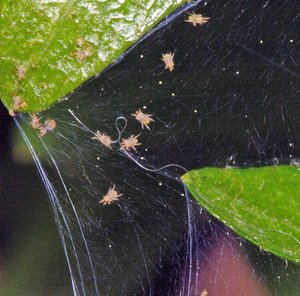 If whitefly is found on indoor plants, it is necessary to immediately treat everything, even unaffected ones, with chemicals that have a direct effect on the insect's digestive system. The most effective are "Admiral", "Aktara". These products are applied by spraying the surface of the flower. Also, the soil should be treated with this solution, since insects can accumulate on its surface.
If whitefly is found on indoor plants, it is necessary to immediately treat everything, even unaffected ones, with chemicals that have a direct effect on the insect's digestive system. The most effective are "Admiral", "Aktara". These products are applied by spraying the surface of the flower. Also, the soil should be treated with this solution, since insects can accumulate on its surface.- In the case when there was a massive damage to the flower, it is necessary to remove all leaves with colonies of larvae and treat the plant with such chemicals as "Comfidor" or "Talstar".
- Since the whitefly has several stages of development, a single treatment of a houseplant will not make it possible to completely get rid of it. Therefore, it is worth treating the affected plants for a month so that the adult parasite will completely disappear. A good option would be to alternate between different chemicals, which will avoid the insect's adaptation to a specific component.
- If whitefly infection occurred on fuchsia, then only chemical preparations cannot be dispensed with. We'll have to work hard to remove the larvae and mechanically: crush eggs, catch flying flies.
- Also, you can get rid of the larvae and an adult if the flower is taken out into the air, where the temperature will be about 10 degrees Celsius. Within a few days, the insect dies completely. But cases have been noted when the larvae stop developing and, when the temperature is normalized, they develop again.
- If a whitefly lesion was detected at the initial stage, then the leaves can be treated with a soap solution. The plant is sprayed with a thick foam from the solution and this blocks their ability to lay the larvae on the surface. This procedure should be performed within a month every 5 days.
- Garlic infusion also fights against whitefly. To do this, grind 2-3 cloves of garlic and pour a liter of water. The resulting mixture is infused for a day and then applied to the plant with a sprayer.
Effective methods of preventing whitefly
In order not to think about the question of how to get rid of the whitefly, it is worth taking care of proper prevention. Among the effective ways the following can be named:
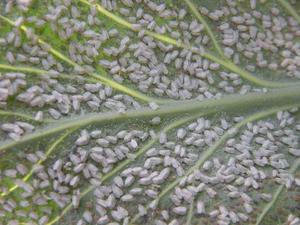 Systematic ventilation of the room where indoor flowers grow. This will avoid the rapid development of the insect and create optimal temperature regimes for the flower's immune system.
Systematic ventilation of the room where indoor flowers grow. This will avoid the rapid development of the insect and create optimal temperature regimes for the flower's immune system.- Whitefly will not land on a plant that is regularly sprayed or given a warm shower. It is necessary to systematically remove dust and dirt from the leaves with a soft sponge.
- All indoor flowers should be regularly inspected for any pests. The lower part of the leaves deserves special attention.
- Whitefly is afraid of wood ash, so a small layer must be regularly poured onto the surface of the soil;
- You should not immediately put purchased flowers to your own, as they can be affected by a whitefly. It is worth quarantining a new pet for at least 2-3 weeks.
- When airing a room on summer days, it is better to use mosquito nets on the windows or hang sticky insect tapes. It is the smell from these ribbons that attracts the whitefly very well.
The whitefly is an insect that can completely destroy all indoor plants in the house... It is worth remembering that only the vigilance of the owner, regular inspections of his greenhouse, compliance with all the conditions of prevention, will allow you to enjoy beautiful flowers, their exuberant flowering for a long period.
